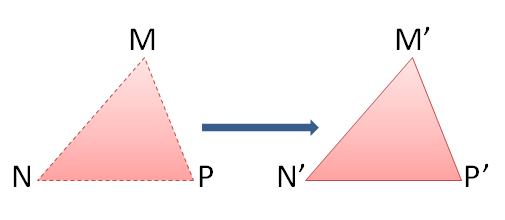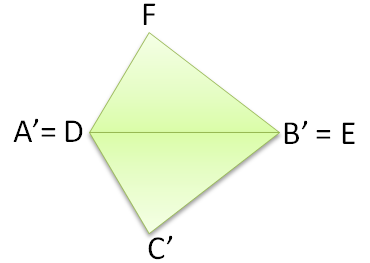SSS Congruence Theorem and Its Proof
Many high textbooks consider the congruence theorems (SSS Congruence Theorem, SAS Congruence Theorem, ASA Congruence Theorem) as postulates. This is because their proofs are complicated for high school students. However, let us note that strictly speaking, in Euclidean Geomtery (the Geometry that we learn in high school), there are only five postulates and no others. All of other postulates mentioned in textbooks aside from these five are really theorems without proofs.
In this post, we are going to prove the SSS Congruence Theorem. Recall that the theorem states that if three corresponding sides of a triangle are congruent, then the two triangles are congruent.
Before proving the SSS Congruence theorem, we need to understand several concepts that are pre-requisite to its proof. These concepts are isometries particulary reflection and translation, properties of kites, and the transitive property of congruence. If you are familiar with these concepts, you can skip them and go directly to the proof.
Isometry
In the figure below, is slid to the right forming
. Clearly, when you side a figure, the size and shape are preserved, so clearly, the two triangles are congruent.
Sliding or translation is a form of isometry, a type of mapping that preserves distance. In the isometry above, the preimage is mapped onto the image
. Notice that there is a 1-1 mapping between the objects in the preimage and the objects in the image. Each object in the preimage has exactly one image. Also, each object in the image has exactly one preimage.
Properties of Kites
A kite is a polygon with two distinct pairs of congruent sides. In the figure below, is a kite with
and
.
The diagonal is a line of symmetry of the kite. This means that
mirrors
. Mirroring an image or reflection preserves distance. This means that
and
congruent. Thus, we say that a kite is reflection-symmetric.
The Transitive Properties of Congruence
Let us recall the transitive property of equality of real numbers. It says that for any real numbers ,
, and
, if
and
, then
. This is also true in congruence. For any figure
,
and
,
If and
, then
.
Now that we finished the prerequisite, we now prove the theorem.
The SSS Congruence Theorem
If in two triangles, three sides of one are congruent to three sides of the other, then the two triangles are congruent.
Proof
Given triangles and
with
,
and
.
In proving the theorem, we will use the transitive property of congruence. We show that if a third triangle exists, and is congruent to it, then
is also congruent to it. Let the third triangle be
, an image of
under an isometry.
To begin, since , there is an isometry that maps
to
. So, there is a triangle
which is an image of
that has a common side with
.
Now, and
. By the transitive property of congruence,
and
. Therefore,
and
form a kite. Since this kite is reflection-symmetric over line
,
is a reflection of
which means that
.
So, if the three pairs of sides of can be mapped onto
by an isometry, by the definition of congruence,
. This prove the SSS Congruence Theorem.
Reference: An old edition of Geometry (University of Chicago School Mathematics Project)


